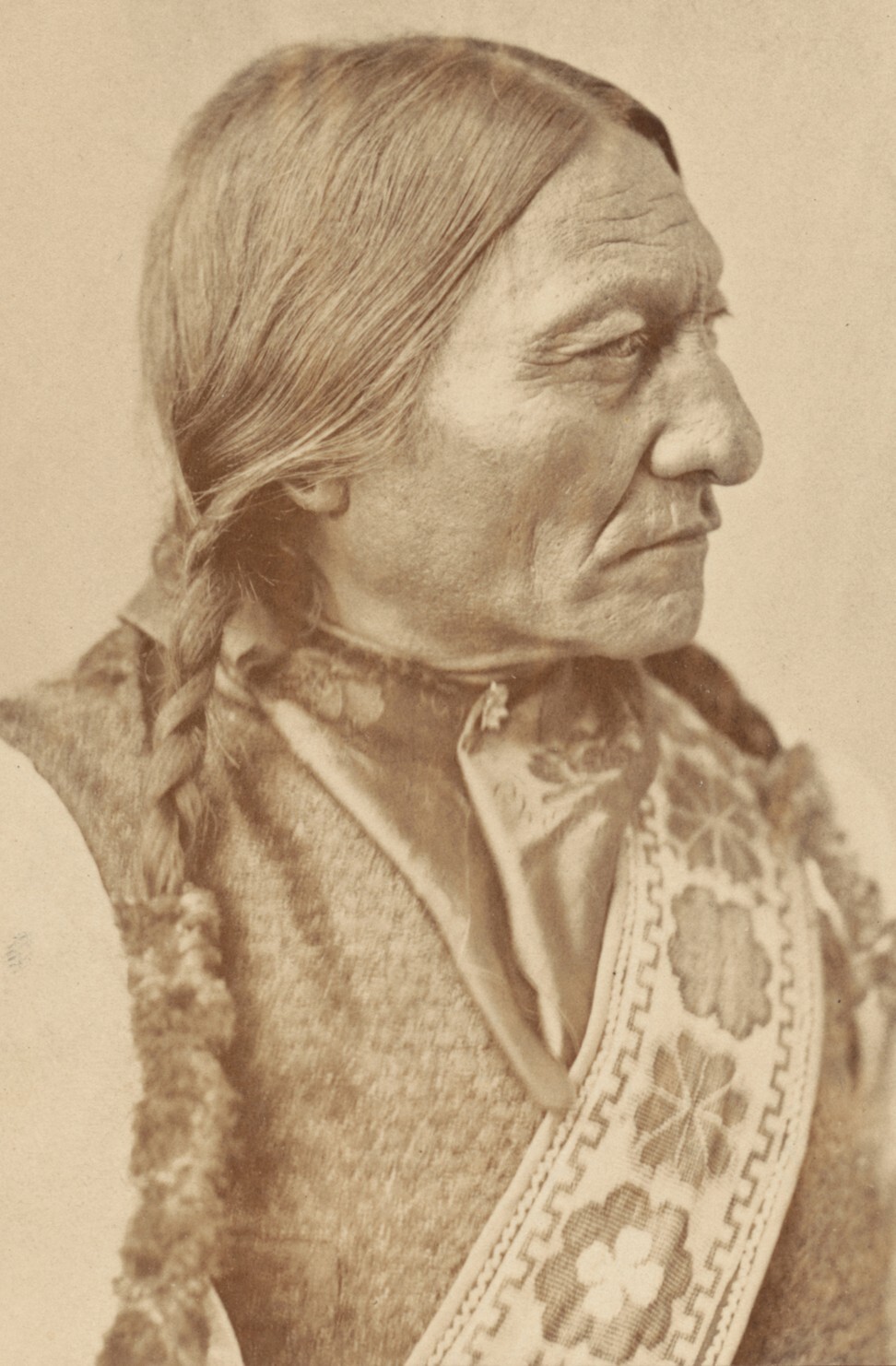
DNA confirms man is Sitting Bull’s great-grandson
- The Native American leader famously led 1,500 Lakota warriors at the Battle of the Little Bighorn in 1876, wiping out US General Custer and his troops
- The breakthrough is billed as the first time genetic evidence has corroborated a family relationship between a historic figure and a living descendant
A man’s claim to be the great-grandson of Sitting Bull has been confirmed using DNA taken from the Native American leader’s scalp lock – billed as the first time genetic evidence has corroborated a family relationship between a historic figure and a living descendant.
The breakthrough was made possible by a new technique that can yield useful genetic information from a tiny or fragmented sample of ancient DNA, developed by a team of scientists led by Professor Eske Willerslev of the University of Cambridge and the Lundbeck Foundation GeoGenetics Centre in Denmark.
Their findings were published in a paper in Science Advances on Wednesday. The same methods can now be deployed for investigating other historical figures, from outlaw Jesse James to the Russian tsar’s family, if old DNA is available.
Prior ancient genetic studies have looked for matches between specific DNA in the Y chromosome passed down the male line, or, if the long-dead person was female, specific DNA in the mitochondria passed down from mothers.

In this case neither could be used as the man, 73-year-old Ernie LaPointe, claimed to be related to Sitting Bull on his mother’s side, Willerslev said.
He and his colleagues instead found a way to search for non-sex specific “autosomal” DNA.
They located a small amount of autosomal DNA in the hair sample, then developed a computational method to compare it to DNA from LaPointe and 13 other members of the Lakota Sioux tribe, to see whether similarities in the genome really indicated a close relation or were commonplace.
“Based on that, we can estimate the level of relatedness to Sitting Bull, and that fits with great-grandson,” Willerslev said, adding: “We are 100 per cent certain.”
Ancient Indonesian girl reshapes views on migration, race of early humans
“Over the years, many people have tried to question the relationship that I and my sisters have to Sitting Bull,” said LaPointe, in a University of Cambridge press statement.
Lapointe believes that Sitting Bull’s remains currently lie at a site in Mobridge, South Dakota, in a place that has no significant connection to the warrior and the culture he represented.
While he had historical records that attested to the relationship, such as birth and death certificates, LaPointe sought the evidence of a genetic link to help grant him the right to rebury his ancestor’s remains in a more appropriate final resting place.
Before they can be moved, the remains there will have to be analysed in a similar way to the sample.

Sitting Bull, whose real name was Tatanka-Iyotanka (1831-1890), famously led 1,500 Lakota warriors at the Battle of the Little Bighorn in 1876, wiping out US General Custer and five companies of soldiers.
He was shot dead in 1890 by the “Indian Police” acting on behalf of the US government.
Around a decade ago, Willerslev came to learn of LaPointe’s quest to have his DNA confirmed and offered his services.
Sitting Bull’s scalp lock was repatriated to LaPointe by the Smithsonian Institution in 2007, but before he could hand it over to Willerslev, he wanted to know whether the scientist’s intentions were pure.
World’s oldest DNA sequenced from 1.2 million-year-old mammoths
LaPointe asked Willerslev to take part in a ceremony involving a medicine man, drummers and chanting in a darkened room.
“A blue-green light appeared in the middle of the room – and I am a natural scientist so I thought, well, that’s the medicine man running around with a lamp, but when I reached out in the darkness, there was nobody there,” Willerslev said.
He and his hosts then went off to smoke a Lakota pipe and eat buffalo meat, and LaPointe informed him the eerie light had been Sitting Bull’s spirit, giving his blessing to the study.
However, LaPointe gave Willerslev only 4cm of the more than 30cm-long lock, then burned the rest, in line with the spirit’s instructions.
Willerslev felt at the time “it was disastrous”, and he would not have enough DNA left – but the circumstances forced the team to develop their innovative new method over the course of the next 10 years.

.png?itok=arIb17P0)